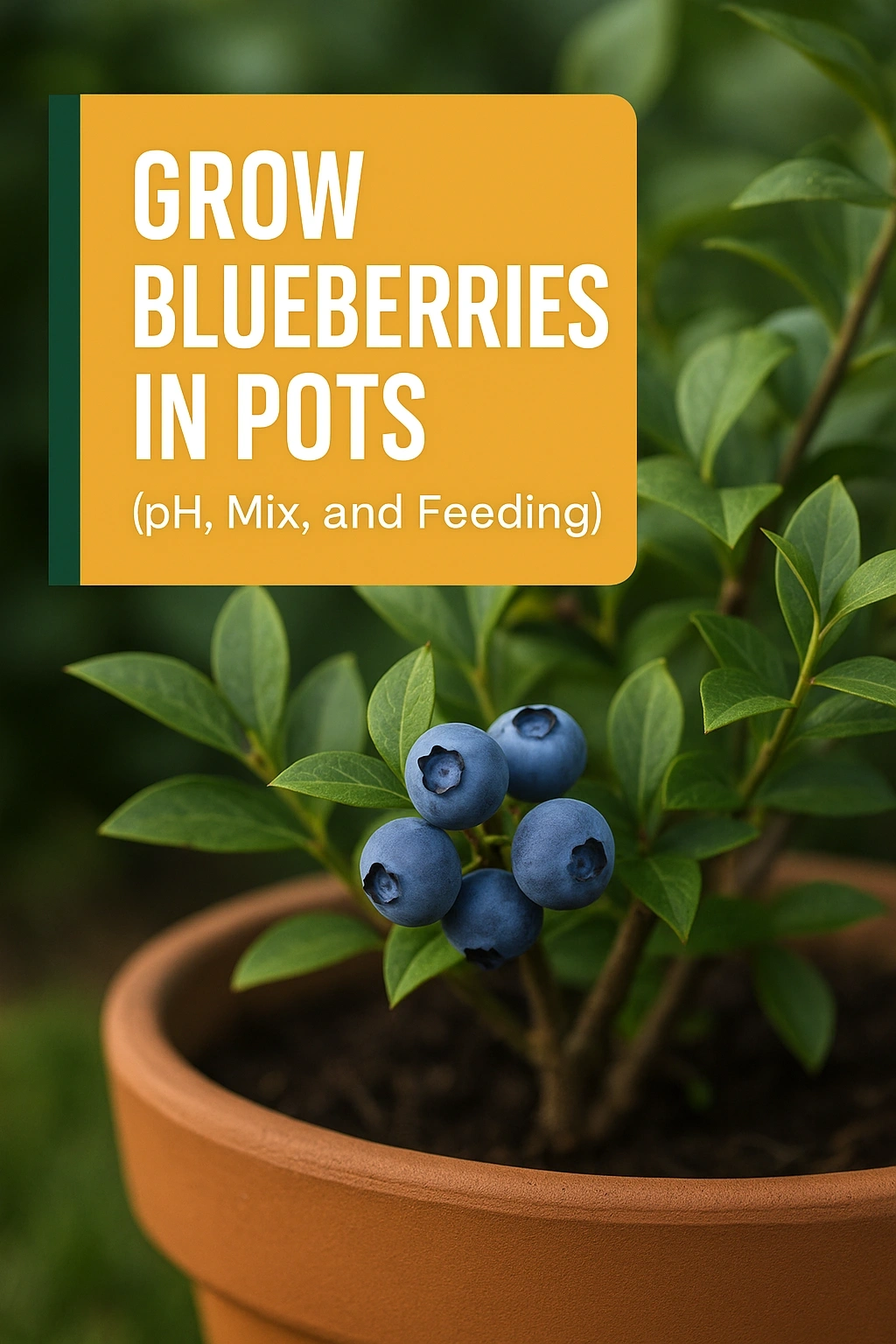
Growing blueberries in pots can be a rewarding endeavor, allowing you to enjoy fresh, juicy berries right at home. However, successful cultivation requires understanding the specific needs of blueberry plants, particularly regarding soil pH and feeding. This article will delve into optimal pH levels for blueberries, how to create the right soil mix, and the best feeding practices to ensure healthy, productive plants.
The Importance of Soil pH for Blueberries
Blueberries thrive in acidic soil, with an ideal pH range between 4.5 and 5.5. This acidity is crucial because blueberries have specific nutrient requirements that are best met in a lower pH environment. When the soil pH shifts outside this range, nutrient uptake can be affected, potentially leading to deficiencies. Understanding and maintaining the right pH can significantly enhance your blueberry plant’s growth and fruiting capacity.
Creating the Perfect Soil Mix for Blueberries
To grow blueberries successfully in pots, it’s essential to create a soil mix that provides adequate drainage, aeration, and acidity. This mix should mimic the natural forest floor where blueberries typically thrive. The right combination of ingredients can greatly influence the health of your plants.
Components of an Ideal Blueberry Soil Mix
- Peat Moss: This is a key ingredient that helps retain moisture while providing the necessary acidity.
- Pine Bark Fines: These improve drainage and aeration, preventing root rot.
- Perlite or Vermiculite: Both promote excellent drainage and help maintain the right moisture levels.
- Acidic Fertilizers: Incorporating fertilizers designed for acid-loving plants can help maintain the right pH.
Feeding Your Blueberry Plants
To ensure vibrant growth and a bountiful harvest, blueberries require a balanced feeding regimen. The right nutrients not only support plant health but also enhance fruit flavor and yield. Here’s how to effectively feed your blueberry plants throughout the growing season.
Types of Fertilizers to Use
Choosing the right fertilizer is crucial for blueberries. Organic fertilizers like composted manure and fish emulsion can provide a nutrient-rich foundation. Additionally, specific formulations like ammonium sulfate can help lower soil pH while providing nitrogen. Always opt for fertilizers designed for acid-loving plants to ensure compatibility with the blueberries’ needs.
Feeding Schedule for Blueberries
- Early Spring: As new growth begins, apply a slow-release fertilizer to kickstart the season.
- Mid-Summer: A second feeding can support fruit development, focusing on potassium and phosphorus.
- Fall: Reducing feedings in late summer helps prepare the plant for dormancy.
Watering Practices for Potted Blueberries
Watering is a vital aspect of blueberry care, especially for potted plants. Blueberries require consistent moisture but are sensitive to overwatering. Understanding their water needs can help you maintain healthy plants and prevent root issues.
Watering Techniques for Optimal Growth
Water your blueberry plants deeply but infrequently. This encourages roots to grow down into the pot, providing stability and access to nutrients. Use a moisture meter or check the soil with your finger; water when the top inch feels dry. During hotter months, you may need to water more frequently, particularly if the pots dry out quickly.
Common Challenges in Growing Blueberries in Pots
While growing blueberries in pots offers many benefits, it also presents unique challenges. Understanding these can help you mitigate potential issues and ensure a successful harvest.
Pest and Disease Management
- Pests: Watch for aphids, spider mites, and fruit flies. Regular inspections and organic insecticides can help control these pests.
- Diseases: Powdery mildew and root rot are common issues. Ensure proper air circulation and avoid overwatering to prevent these diseases.
Environmental Considerations
Blueberries require full sun for at least six hours a day. Place pots in a location that receives adequate sunlight and protection from strong winds. In colder climates, consider moving pots to a sheltered area during winter to protect the roots from freezing temperatures.
FAQs
Can I grow blueberries in any type of pot?
It’s best to use pots made from materials that allow for good drainage, such as clay or plastic with drainage holes. Ensure the pot is at least 12 inches deep to accommodate the root system.
How often should I check the pH of my blueberry soil?
Checking the soil pH every few months is advisable, especially before planting and during the growing season. This helps ensure that the pH remains within the ideal range for blueberry growth.
What are signs of nutrient deficiency in blueberry plants?
Common signs include yellowing leaves, poor fruit development, and stunted growth. These symptoms may indicate a need for additional nutrients or a pH imbalance affecting nutrient uptake.
How do I know if I’m overwatering my blueberries?
Signs of overwatering include yellowing leaves, wilting, and mushy roots. Ensure the pot has adequate drainage and adjust your watering schedule accordingly.
Can I grow more than one variety of blueberries in the same pot?
While it’s possible to grow multiple varieties in one pot, it’s best to plant them in separate pots to ensure each plant receives adequate nutrients and space for root growth.
